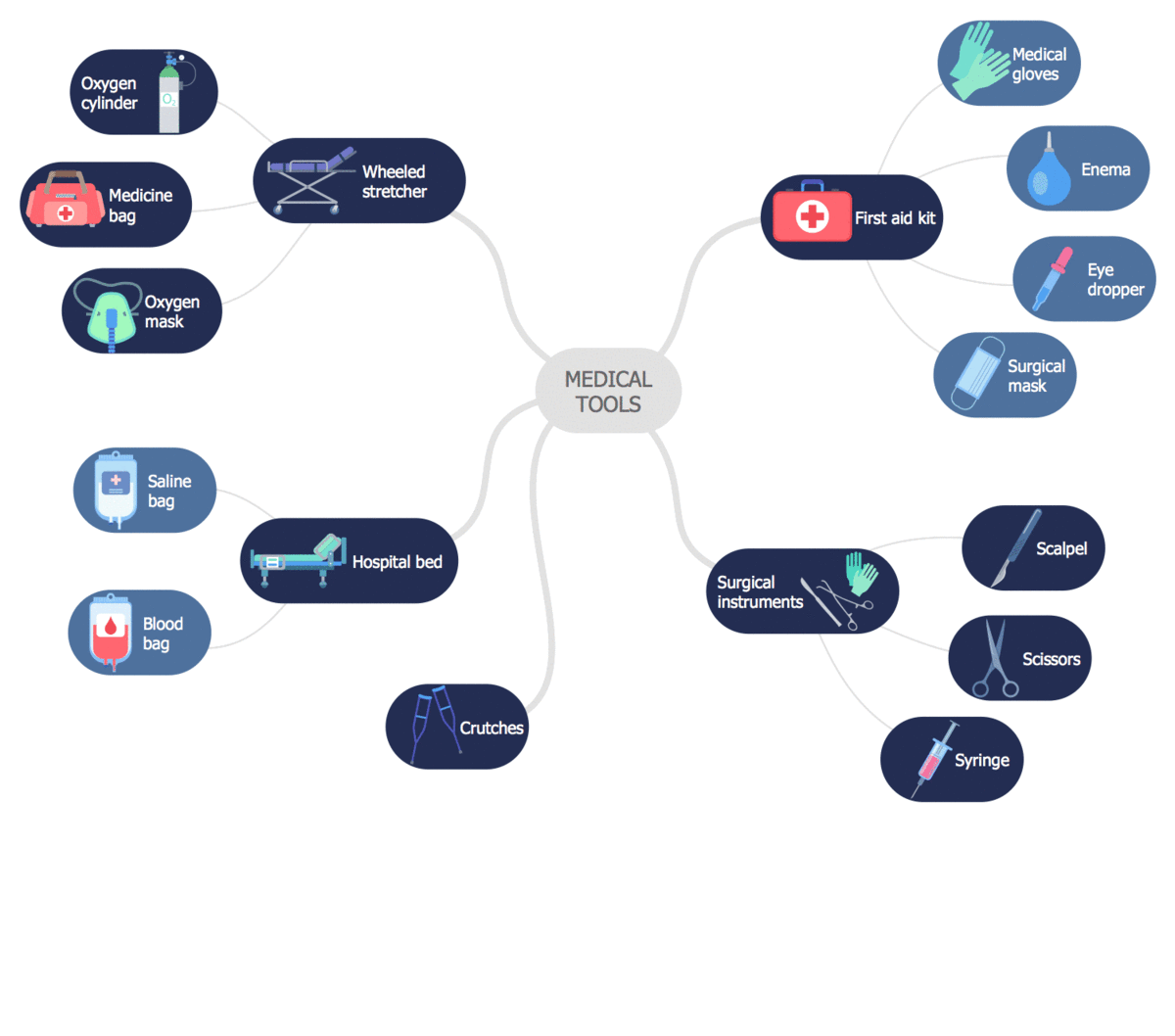Medical Diagnosis
Notice: Undefined offset: 0 in /var/www/html/conceptdraw/project-management/template.php on line 447
The treatment of any disease begins with its detection and establishment of the precise medical diagnosis, i.e. with the medical diagnostics. The process of medical diagnostics includes the comprehensive and systematic examination of a patient, his/her observation, listening to the complaints, gathering of a medical history, the objective study of an organism’s state, the identification of lesions of the pathology and its degree, as well as performing a certain set of laboratory and medical researches that will allow one to accurately determine the problem based on the received results, to make a conclusion about the nature of a given disease and the state of the patient in terms of common medical terminology and to prescribe the appropriate treatment. At this, the treatment’s success directly depends on the quality of the held diagnostics and the correctness of the made diagnosis. The clinical survey usually involves the gathering of symptoms or the semiotics, which the first assumptions about diagnosis are made on and the additional kinds of medical researches are prescribed. After holding the diagnostics, including examinations, various tests, and other medical surveys, on the base of obtained data a conclusion about the patient's state is made, the type of his disease and its causes, thus, the medical diagnosis is made and then the methods of treatment are determined.
In various fields of the medicine, specific diagnostic methods are applied, among them there are external examination, palpation, blood tests and other secretions, x-ray researches, graphic methods, endoscopy, biopsy, laparoscopy, sensing, electroencephalography, enteroscopy, ultrasound diagnostics of different organs, magnetic resonance imaging (MRI), computed tomography (CT), echocardiography, esophagoscopy, electromyography, electrocardiography, and many other methods. The laboratory diagnostics usually involves researches on the sub-cellular level, such as a blood biochemical analysis, urine analysis, biopsy and others. In order to check the state and functioning of a particular organ or a system of organs the instrumental methods are used. Many modern methods of studying the human’s body and health diagnostics, such as computed tomography, magnetic resonance imaging, ultrasound, allow considering the structure and anatomy of a body quite detail, quickly and above all painlessly.

Notice: Undefined variable: patterns in /var/www/html/conceptdraw/project-management/template.php on line 504
Warning: Invalid argument supplied for foreach() in /var/www/html/conceptdraw/project-management/template.php on line 504
Making Medical Diagnosis using Electrodiagnostic Medicine
The diagnostics originates from the hundreds of years ago and continues to develop actively today, it is based on the vast experience of doctors of the past centuries. To systematize the accumulated knowledge, to descript and to represent the information about the structure of a human body, about human diseases, since the ancient times the illustrations were used, along with a text description or without it, which allowed transferring the gathered experience to other doctors, with a goal to help them to make the right diagnosis and to save the lives of their patients. Moreover, in addition to illustrating the medical, anatomical and biological knowledge, the illustrations can be used to show the medicine's history and the sequence of greatest discoveries in a field of medicine.
Medical Diagnostics and Medical Equipment
As for the modern software helpful in drawing medical illustrations, we recommend you turn your attention to the ConceptDraw DIAGRAM diagramming and vector drawing software and Medical Illustrations solution included to the ConceptDraw Solution Park. They are the best helpers in drawing exceptionally-looking medical illustrations and medical infographics regardless of your level in a fine art.
